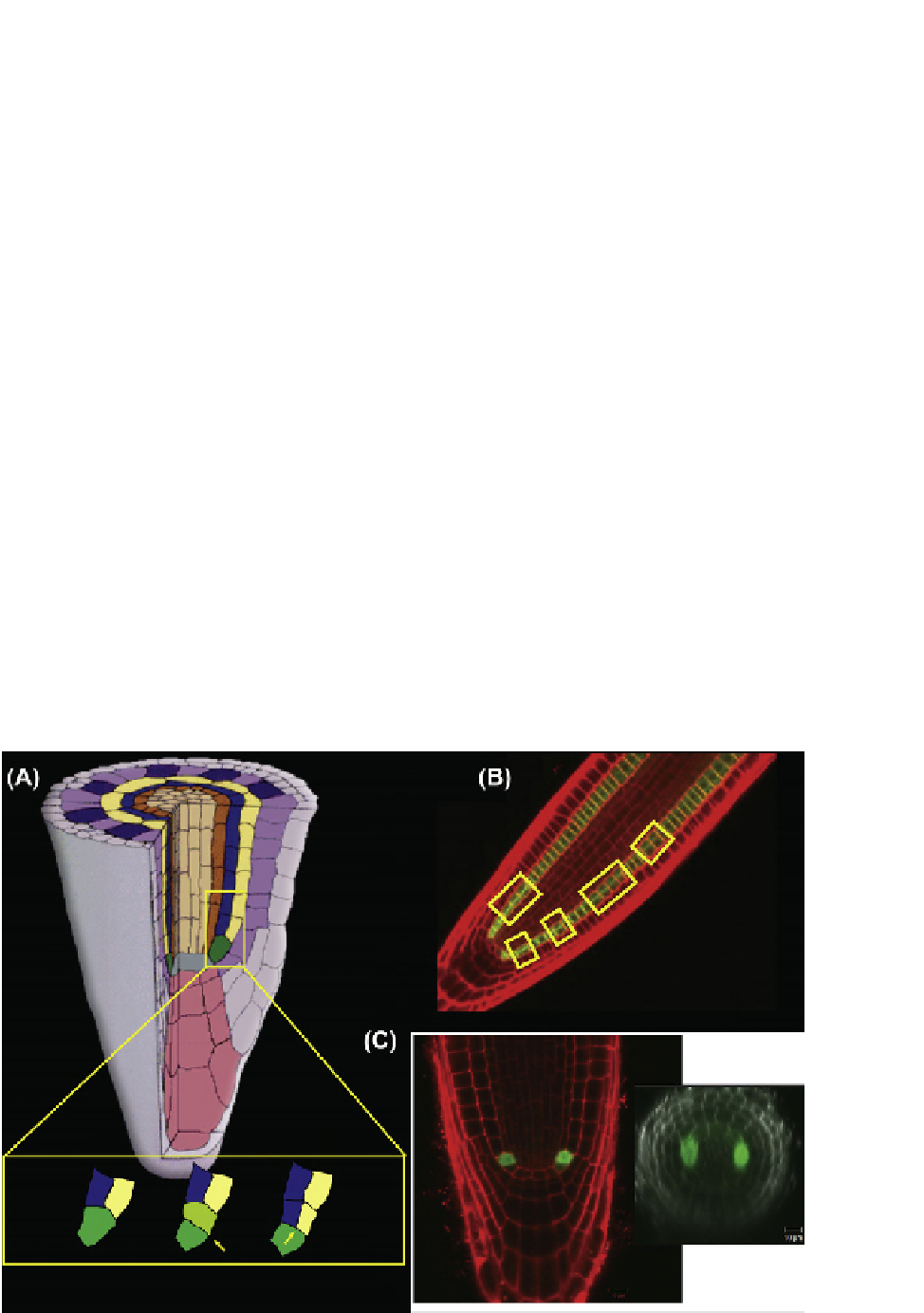Biology Reference
In-Depth Information
Toward an Understanding of the Dynamics
of Asymmetric Cell Division
Although all of the developmental stages are present
along the longitudinal axis of the root, there are dynamic
aspects of development that can only be explored with the
addition of real-time analysis. An example is the cell
division that generates the cortex and endodermis from
a single stem cell. In fact, there are two asymmetric
divisions that must occur: the first regenerates the stem
cell and a daughter cell on its shootward side (
Fig-
ure 20.4
A); the second divides the daughter cell into the
first cells of the endodermis and cortex cell lineages
(
Figure 20.4
A). The plant-specific transcription factors,
SHORTROOT (SHR) and SCARECROW (SCR) are
required for the second asymmetric division to occur
[12,13]
. In mutants of either factor, there is a single cell
layer between the epidermis and pericycle. However, the
identity of this cell layer differs in the two mutants. In shr
the endodermis is missing and there is only cortex,
whereas in scr there are characteristics of both cortex and
endodermis in the mutant cell layer. These phenotypic
differences were the basis for a model in which SHR acts
through SCR to effect the asymmetric division that gives
rise to cortex and endodermis. Further characterization of
the two genes resulted in a more nuanced hypothesis in
which SHR interacts directly with SCR, and together they
regulate downstream genes required for the asymmetric
division
[14]
. An interesting feature of the SHR protein is
that it is initially synthesized in the vascular tissue and
then physically moves to the adjacent cell layer, where it
interacts with SCR, which appears to be immobile
[15]
.It
is this interaction that prevents SHR from moving to the
outer layers of the root
[14]
.
To address the question of how SHR and SCR regulate
the asymmetric cell division, an inducible version of SHR
was constructed by fusing the glucocorticoid receptor to
the SHR protein. In the absence of steroid hormone, the
glucocorticoid receptor causes SHR to be retained in the
cytoplasm, preventing it from entering the nucleus and
controlling downstream genes. When the synthetic steroid
hormone, dexamethasone, is added to the growth medium,
SHR is released and enters the nucleus. This construct was
transformed into the shr mutant. With the addition of
dexamethasone, complete rescue of the mutant phenotype
occurred
[16]
. A second experiment was then performed
in which dexamethasone was added and roots of the
transgenic plants were imaged over time
[17]
. The first
divisions of the mutant layer occurred around 6 hours after
the addition of dexamethasone, followed by rapid division
within the next hour (
Figure 20.4
B). What was surprising
was that the first asymmetric division did not occur in the
FIGURE 20.4
(A) Asymmetric division of the Cortex/Endodermal Initial (CEI) depicted in a schematic. (B) Asymmetric divisions of the mutant
layer after induction of SHR activity. (C) Expression of cyclin D6 in the CEI daughter cell. (Adapted from
[17]
.)




